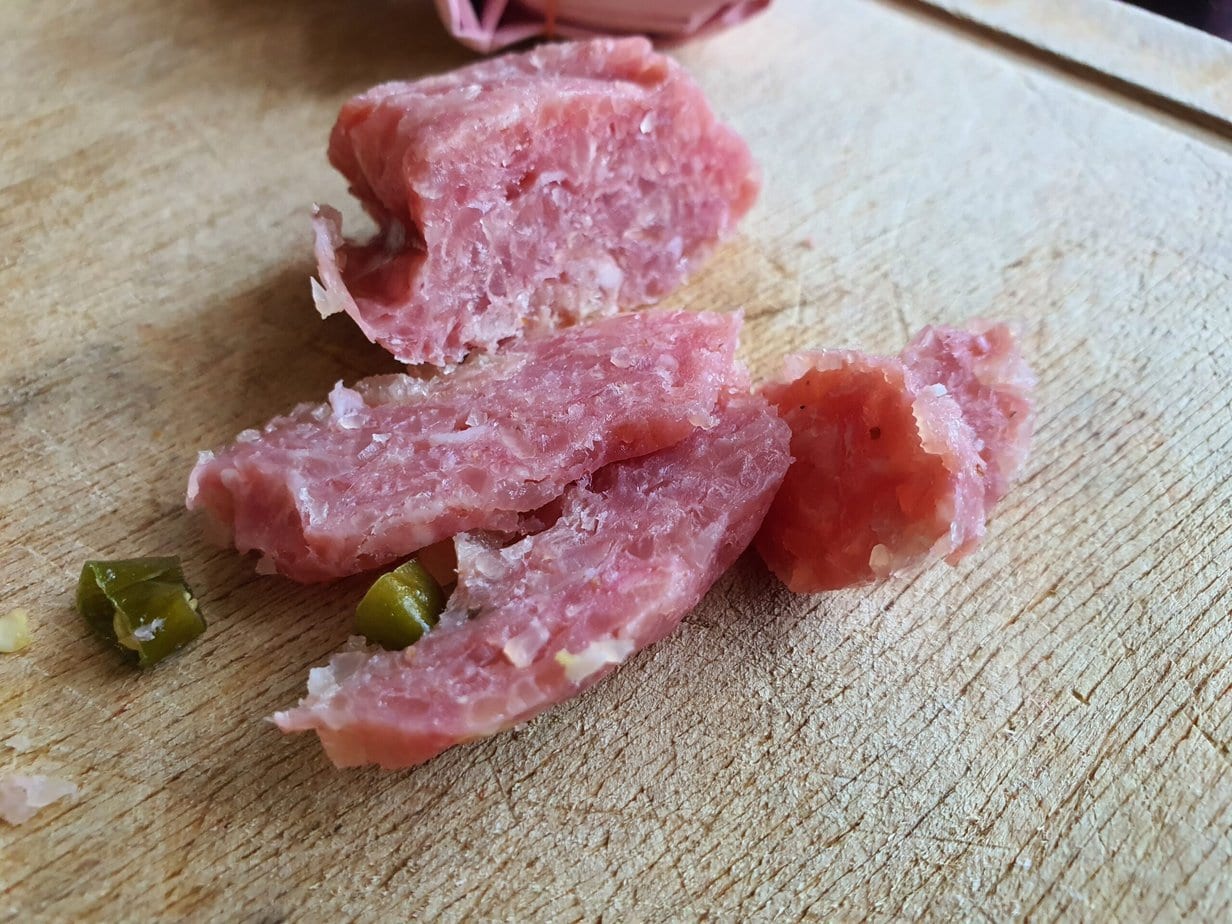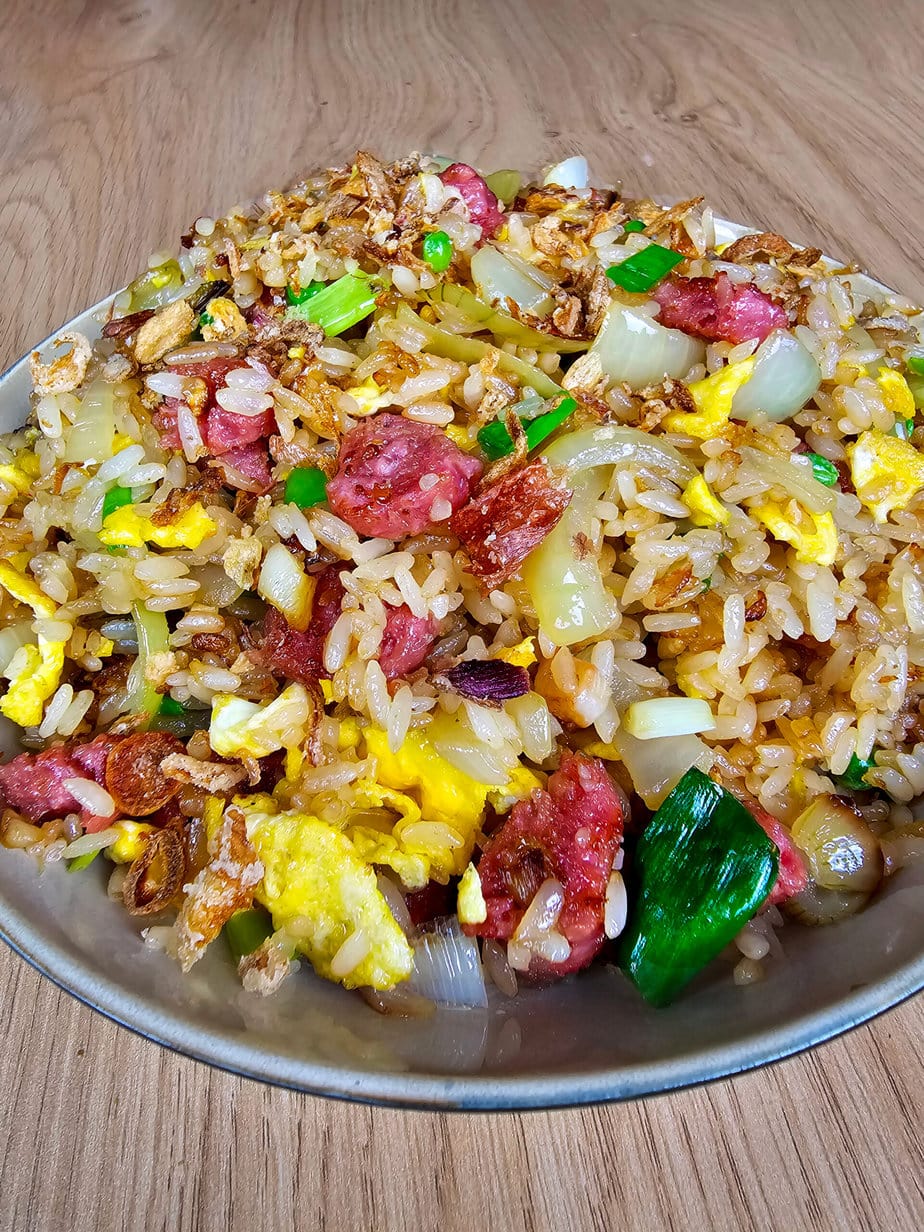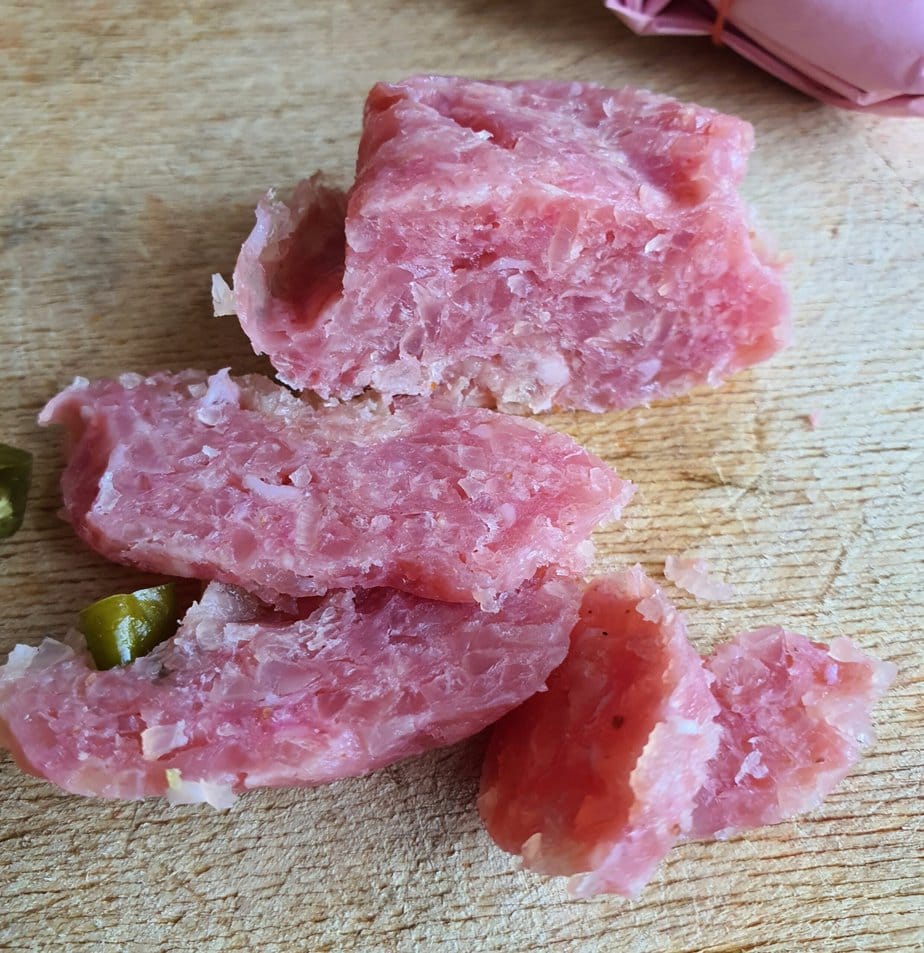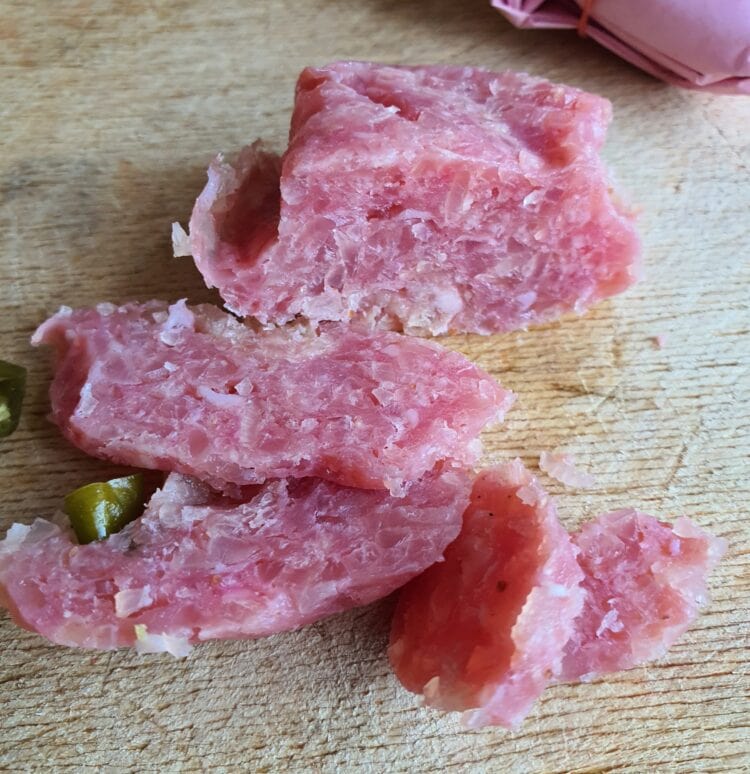This Vietnamese take on a popular Southeast Asian cured pork is spicy, salty, and bursting with the tangy, fiery, and aromatic flavors of raw garlic, chilies, and pepper. It’s a real treat.
Nem Chua: What Is It?
Ah, nem chua! This little gem of Vietnamese charcuterie really knows how to steal the show on our plates! Whether it’s elegantly rolled into mini logs, cut into chic squares, or wrapped in exotic leaves, it’s a flavor explosion for your taste buds.
Picture this: a tangy kick from lactic acid that wakes up your palate; a gentle sweetness from banana leaves or a hint of sugar that whispers in your ear; the punch of raw garlic leaping across your senses; and that delicious saltiness and fresh chili that keep things lively! Nem chua is a carnival of flavors all wrapped up in one neat little package. Ready to join the party? 🎉
Unlike the less appetizing mẻ (Vietnamese fermented rice), this charcuterie has won over French palates.

Nem Chua isn’t just a staple in Vietnamese cuisine—it’s also found in the kitchens of Cambodia, Thailand, and Laos. In the latter two countries, it’s usually called naem, and sometimes spelled nam. One key difference in these recipes is the addition of cooked sticky rice to the mix.
The range of climates across these regions leads to different versions of Nem Chua. Temperature, fermentation time, and preparation methods all vary, resulting in a wide array of takes on this dish.

Despite these differences, Nem Chua is versatile and loved throughout the region. You can enjoy it on its own as a snack—think of it like a spicy sausage—or use it as an ingredient in more elaborate dishes.
Some examples include naem khao, a salad made with crispy rice by crumbling and frying rice balls before mixing them with naem, and phat naem sai khai, which is nem chua stir-fried with eggs.
From Open-Air Fermentation to “Industrial” Methods
Nem chua is a specialty that’s similar to charcuterie, like an uncooked sausage or a dried salami. Traditionally, it’s made by naturally fermenting ground meat, leaving it out in the open air for several days. But a more modern method has emerged to make the process easier and safer.
This new approach uses ready-to-use curing packets sold in stores. These packets drastically cut down the time needed to make nem chua—down to about 24 hours—while reducing the risks often associated with homemade cured meats.
Lobo is one of the most popular brands. Here’s a photo of the packet:

I checked the ingredients and there are nitrites in the packet. Marc, are you trying to poison us??
Why use nitrites? Because they’re essential to prevent the growth of the bacteria that causes botulism, and they give cured meats that familiar flavor we all expect. They also turn the finished product a more appealing shade of red.
You can go the natural fermentation route, but honestly, after reading about botulism symptoms online, I’ll pass.

Can You Eat Nem Chua Raw?
There’s a risk of parasites. I know, after nitrites I’m jumping straight into something even more appealing. But hey, it’s my job to give you the facts.
Any time you use raw pork, there’s a risk of worms. However, that risk is now very low with meat from supermarkets or butchers. Still, zero risk doesn’t exist. If you cook Nem Chua before eating, there’s no risk. Personally, I think it tastes better cooked.

Pork Skin: Essential for Authentic Texture
If you live near an Asian grocery store, make sure to pick up a few bags of cooked, sliced pork skin (usually found in the freezer section). These fine, translucent “noodles” give nem chua its signature texture.
I know it can be hard to find, so here’s a way to make it yourself:
You’ll need raw pork skin (sometimes sold as rind)—some butchers even give it away for free. Boil it until a knife slides in easily, about 45 minutes, then drain and chill in the fridge. Once cold, slice the skin into very thin strips with a sharp knife, then roughly chop into shorter lengths. Now it’s ready for your recipe.

Ingredients
- 900 g ground pork preferably lean
- 1 teaspoon whole black peppercorns
- 1 teaspoon whole white peppercorns
- 110 g cooked pork skin rinsed, drained, and coarsely chopped (see method above)
- 7 cloves medium garlic cloves, minced plus thinly sliced garlic for garnish
- 4 chiles, stemmed and sliced plus thinly sliced chile rings for garnish
- 30 g sugar
- 4 g salt
- 70 g nem chua powder (one packet) for example, Lobo brand
Instructions
- Grind the black and white peppercorns in a spice grinder to a very fine powder. Add to the pork along with the pork skin, minced garlic, sliced chiles, sugar, and salt. Mix well with a clean gloved hand or spatula.
- Add the nem chua powder (don’t forget the contents of the small inner packet). With a gloved hand, knead the mixture by grabbing handfuls, pressing firmly into your palm, and repeating until the mixture is sticky and paste-like, about 5 minutes.
- Line a 20 cm square baking dish with plastic wrap. Transfer the mixture to the pan and smooth into an even layer with a spatula. Place 1 slice of raw garlic and 1 chile ring on the surface about every 5 cm.
- Cover with plastic wrap, pressing it firmly onto the surface, and refrigerate for at least 24 hours and up to 1 week before cutting and serving.
Notes
Nutrition
Recipe sources: RunawayRice, Serious Eats, NPF family recipes

